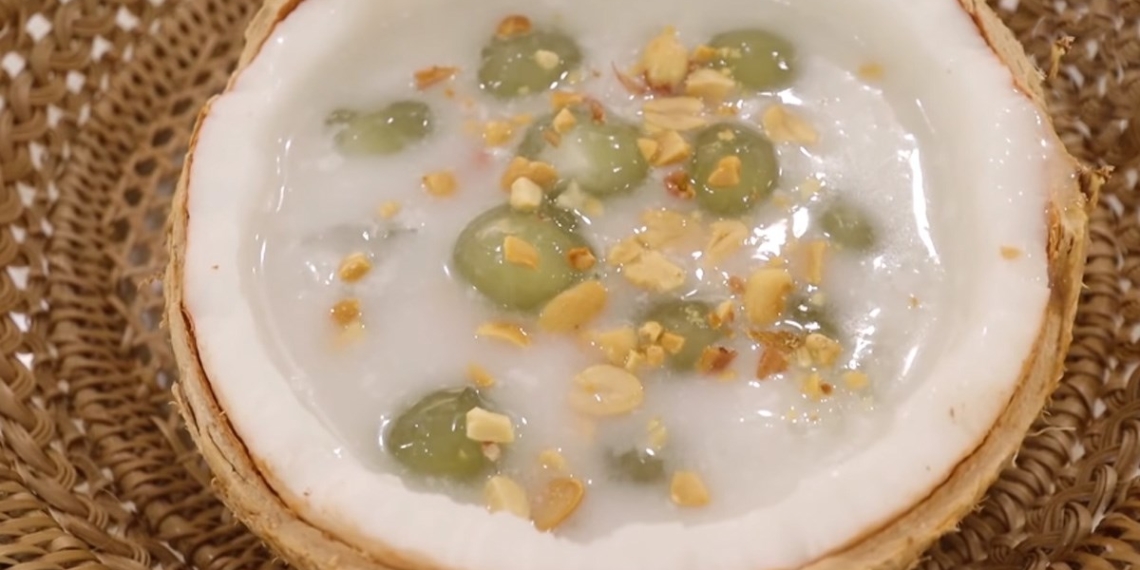-
Preparation
15 minutes
-
Processing
30 minutes
-
Difficulty
Easy
With just a few very simple steps, you can easily make the delicious, sweet, and fragrant coconut jelly with pandan leaves and coconut milk. Let’s get cooking with TasteVN and make this delicious jelly dessert right away!
Ingredients for Coconut Jelly with Pandan Leaves and Coconut Milk Serves 4
Coconut flesh 1/2 fruit Grated coconut 500 gr (used to extract coconut milk) Pandan leaves 1 bunch Rice flour 70 gr Tapioca starch 180 gr Boiling water 150 ml Sugar 5 tablespoons Salt 1.5 teaspoons
How to choose and buy sticky coconut
- You can choose to buy delicious sticky coconuts at regional specialty markets, especially in the Mekong Delta. You can also go to Tra Vinh to personally select the best quality sticky coconuts.
- Delicious sticky coconuts usually have thick, soft, chewy flesh, and the coconut water inside is slightly thick, viscous, and has very little water.
- You can shake the sticky coconut; if you do not hear any sound or only a very faint “slosh,” it can be chosen for purchase.
- Conversely, you should not choose heavy sticky coconuts that sound like they have water sloshing around inside, as they often have not yet formed the flesh, and the flesh is thinner and less chewy.
Information about sticky coconut
- Sticky coconut is also known as cream coconut, thick-fleshed coconut, or makapuno. It is a type of coconut that has much thicker, softer, and chewier flesh than regular coconuts and is almost hollow.
- The coconut water inside is viscous, slightly thick, and has a translucent white color.
- Sticky coconut is known as a unique specialty only available in Tra Vinh, especially in the area of Cau Ke district.
- Due to the low fruiting frequency (1 bunch usually produces 1-2 sticky coconuts), the price of sticky coconuts in the market is quite high. Generally, the price averages around 200,000 VND per fruit, depending on the weight and variety.
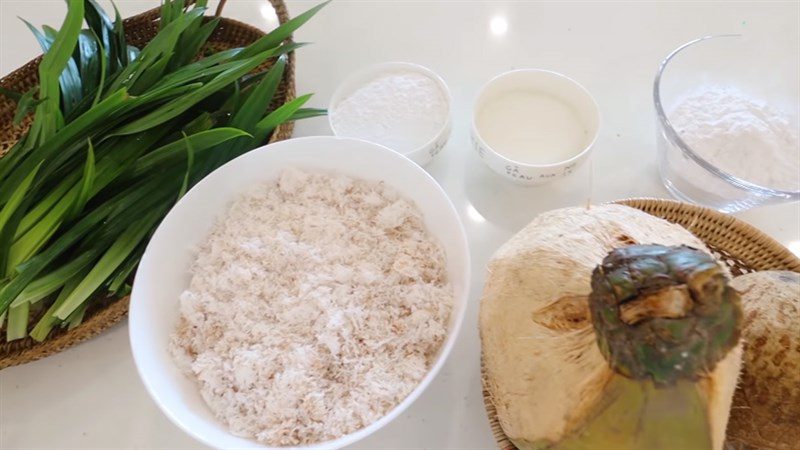
Tools for preparation
How to make Che dua sap with pandan leaves and coconut milk
-
Extract pandan leaf juice
After washing the pandan leaves, cut them into short pieces using a knife. Put them into a blender to puree.
Use a sieve to filter out the pandan leaf juice and discard the leftover pulp.
Tip: You can add a little water to the blender with the pandan leaves to help them blend more easily.
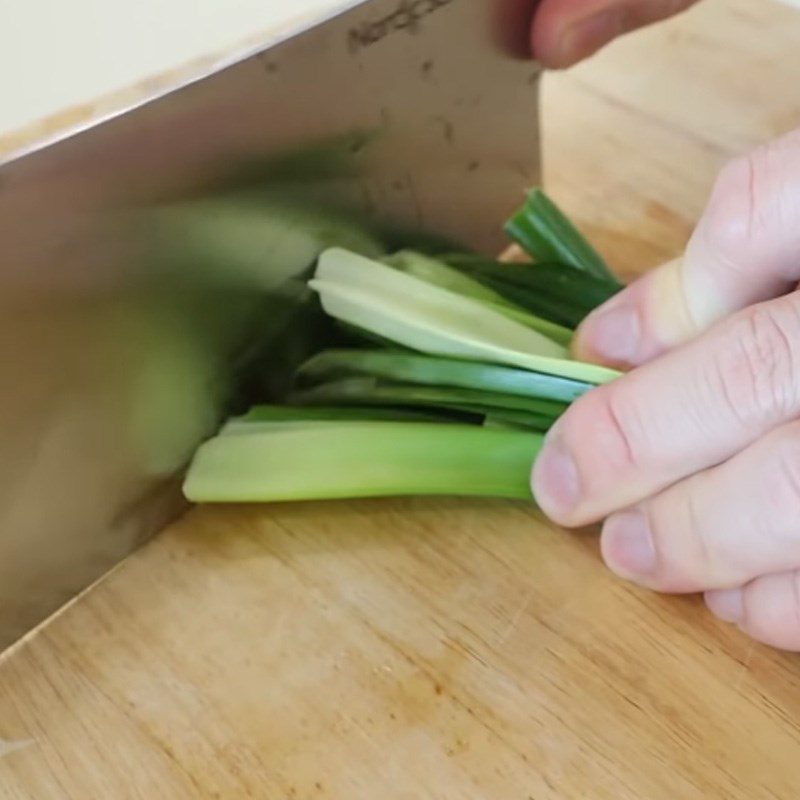
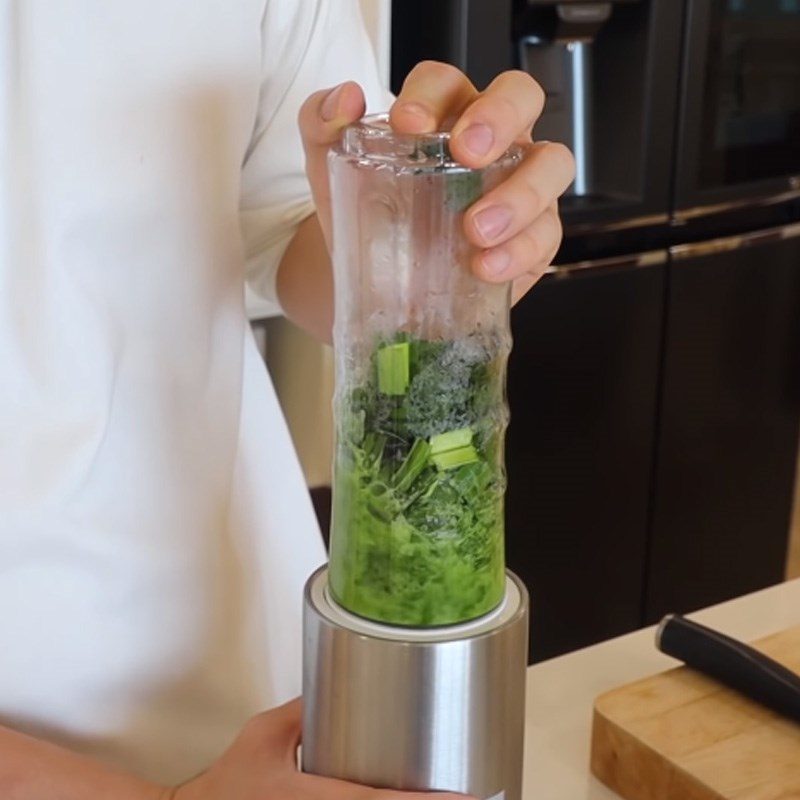
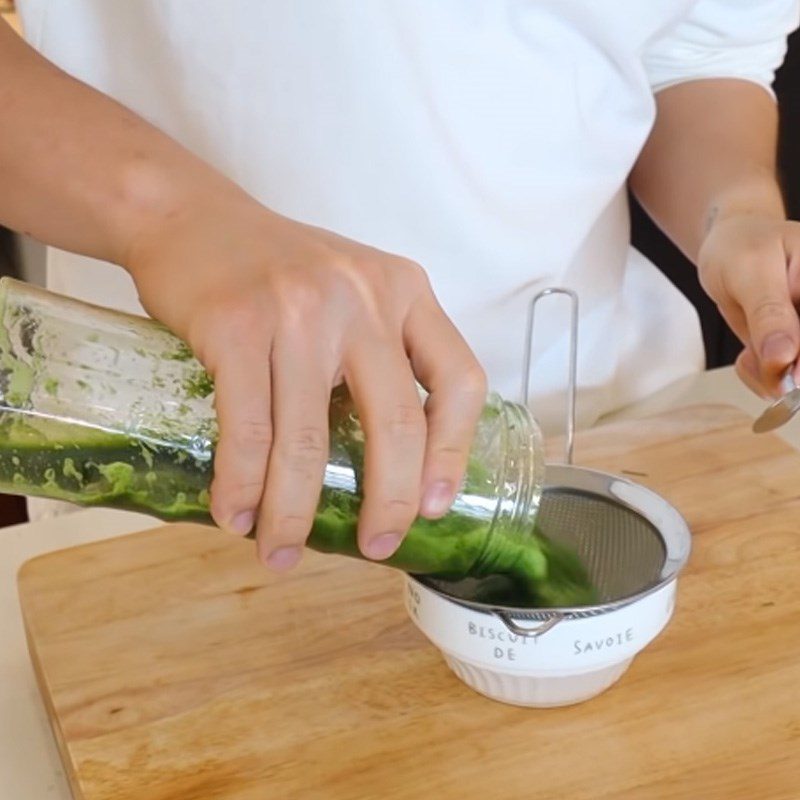

-
Mix the coconut jelly coating powder
Mix the powder mixture with 150g of tapioca flour, 70g of rice flour, add 1/2 teaspoon of salt, and 1 tablespoon of sugar, and mix well.
Use 150ml of boiling water to dilute the pandan leaf juice that was just filtered, and use a spoon to stir well to help the color dissolve faster.
Gradually add the pandan juice into the flour, using your hands to knead the dough thoroughly and vigorously. Knead until the dough is evenly expanded, smooth, and forms a lump, then cover tightly with plastic wrap.
Note: Since the water used must be boiling hot, when mixing the flour by hand, you can use gloves or a spoon to mix, wait until the dough cools down a bit.

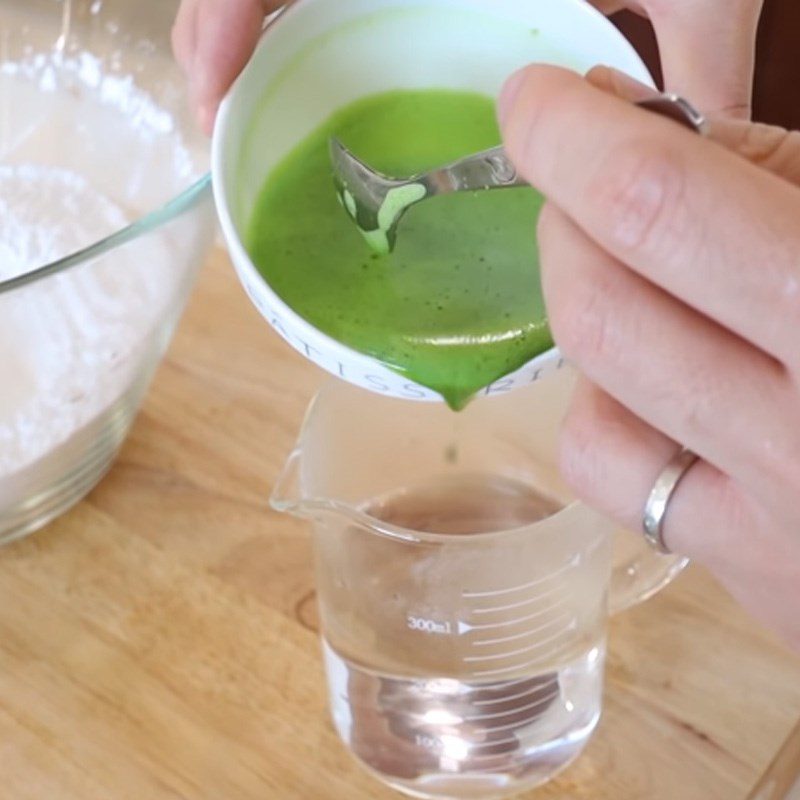

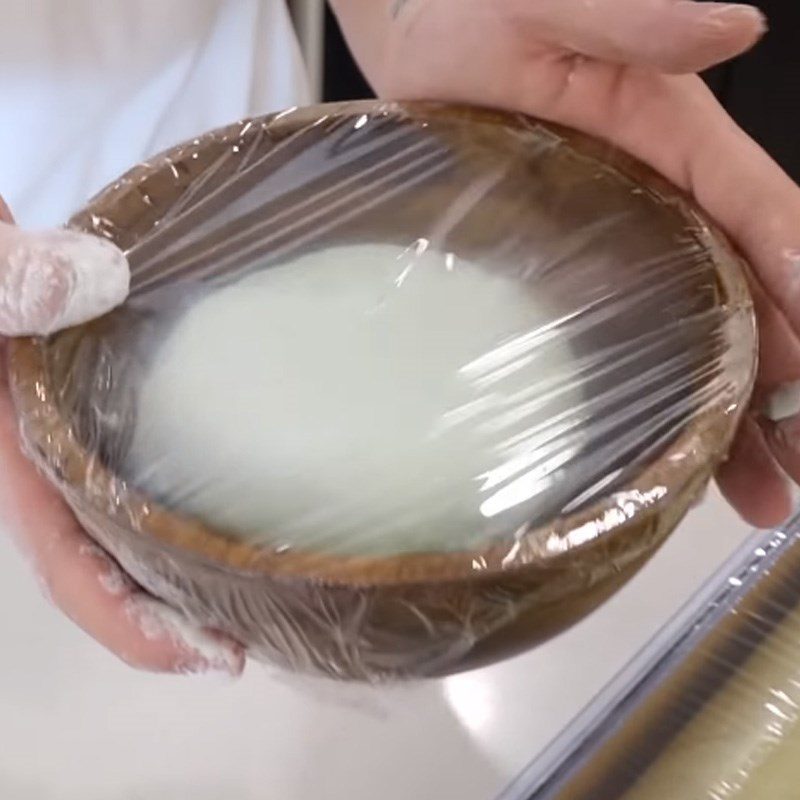
-
Remove the sáp coconut shell
Use the back of a knife to strike firmly and decisively in the middle of the coconut, quickly split the coconut shell in half.
Since the coconut meat adjacent to the coconut water is very soft, you can gently use a spoon to scrape out all the coconut water and a bit of the soft coconut meat on the surface, then put it in a separate bowl.
The remaining coconut meat should also be scraped out, then cut into small diced pieces.


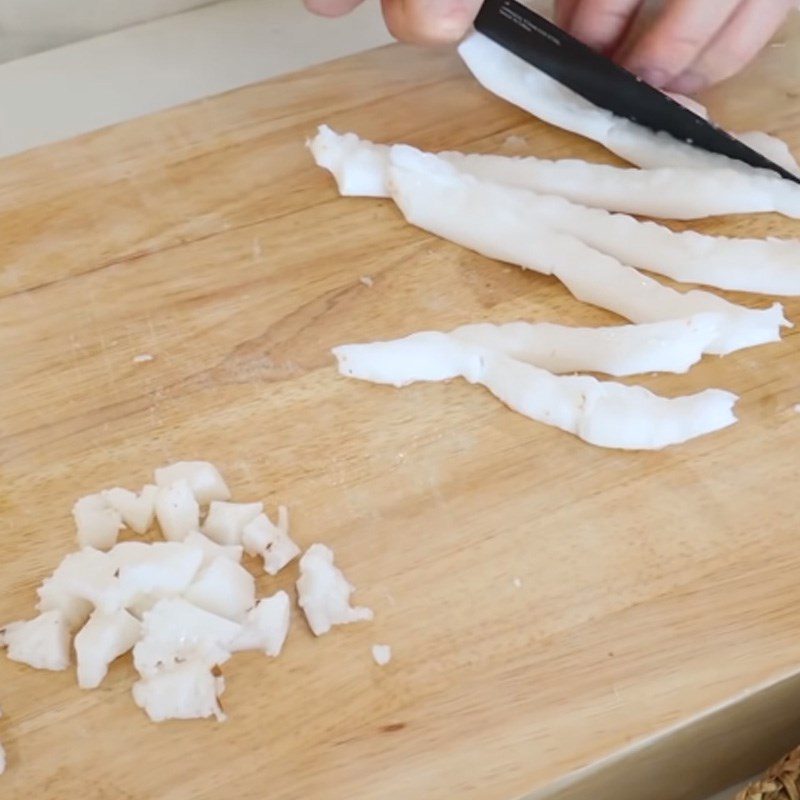
-
Shaping the coconut sáp balls
Take the dough that has been fermented in plastic wrap out, take a sufficient amount of dough to place in your hand. Place a small piece of coconut sáp on top of the dough, then slowly roll it evenly to shape the ball into a round form. Repeat until all dough is used.
Tip:
- Make sure the dough completely covers the coconut sáp ball so that when cooked, the ball remains intact and round without breaking.
- You should place the balls with a small distance between them to avoid sticking together.
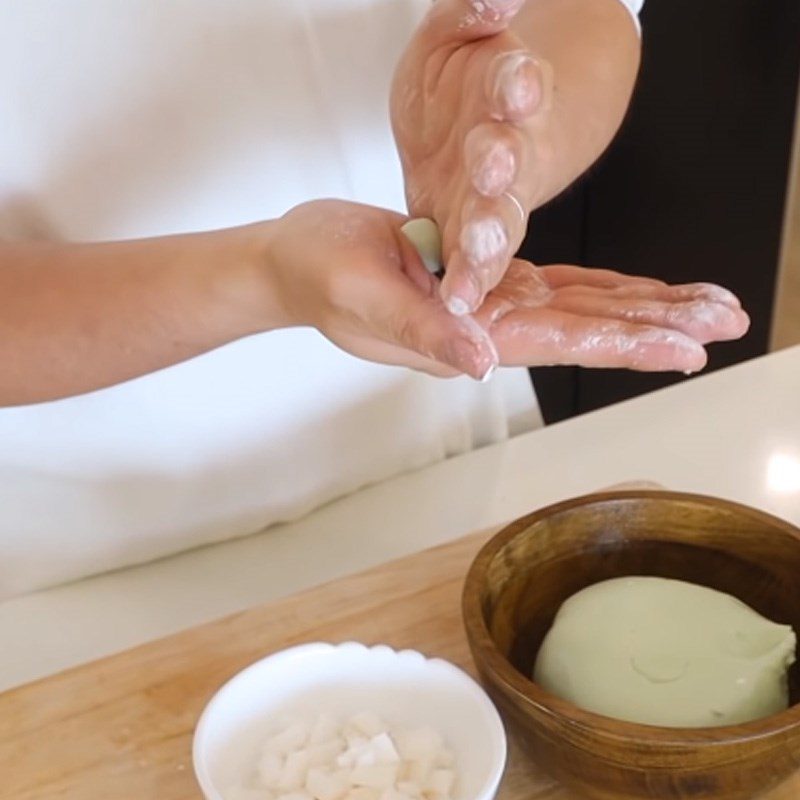
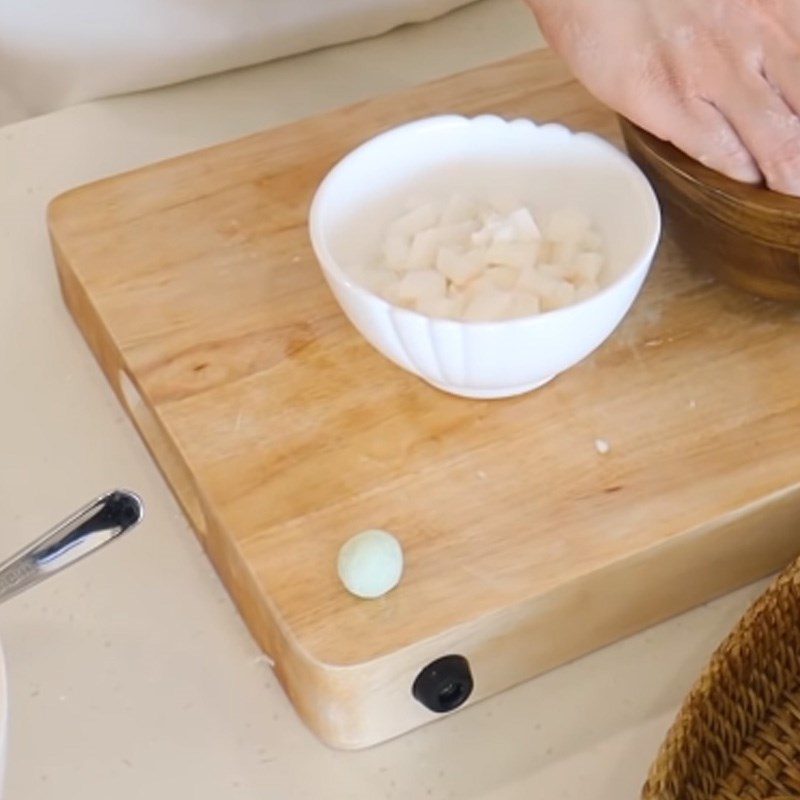
-
Boiling coconut milk
Add 1 liter of water to the coconut flesh, using your hands to mix and squeeze evenly several times. Use a soft cloth to line a bowl, then slowly pour all the coconut flesh and water into the bowl.
After gathering the mouth of the cloth, use force to squeeze hard to help the coconut milk flow completely into the bowl.
Place a pot on the stove, add all the coconut milk, coconut water, and the soft coconut sáp into the pot, boil over medium heat. Season with 4 tablespoons of sugar, 1 teaspoon of salt, and mix well until the mixture boils.
Add 2 tablespoons of tapioca starch to the pot, using a spoon to stir well to help the coconut milk thicken.
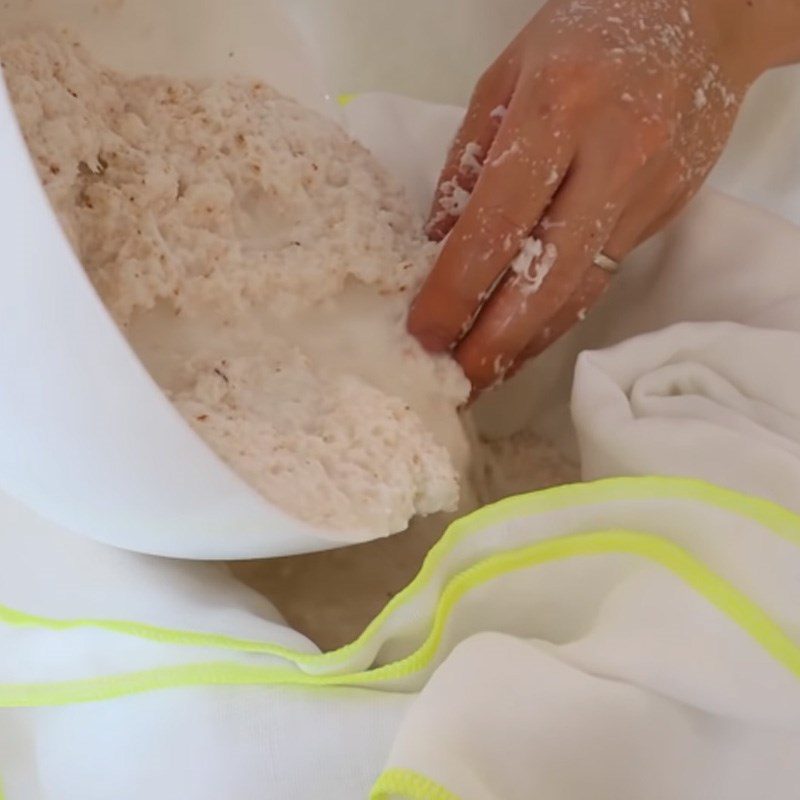
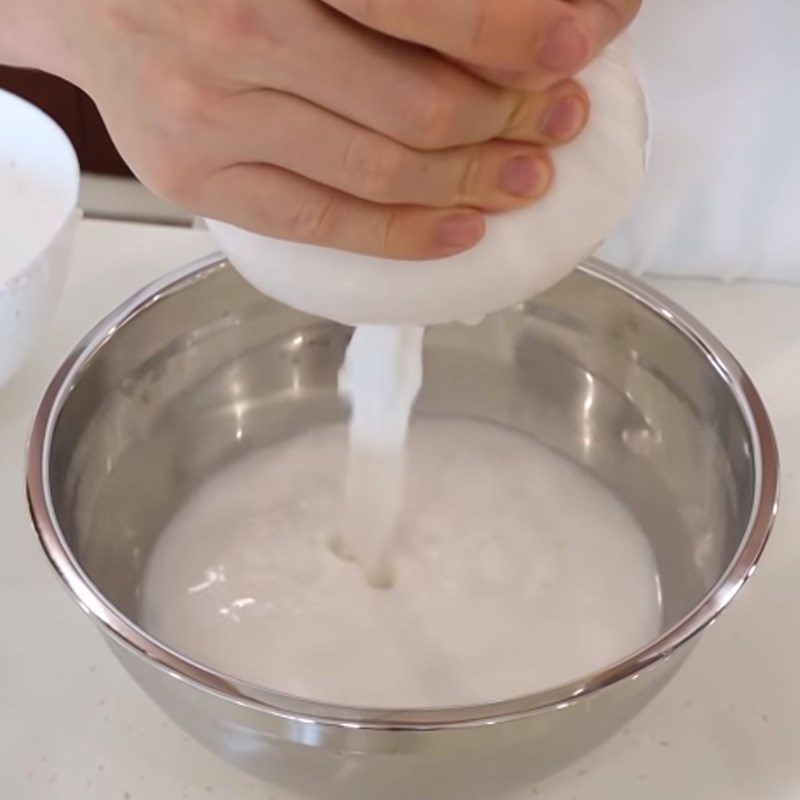
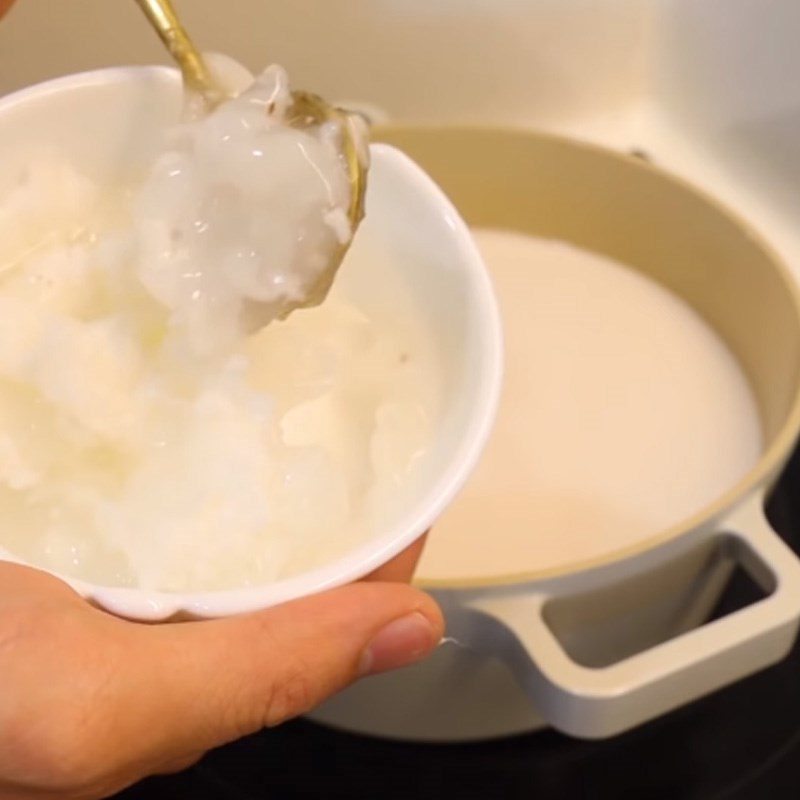
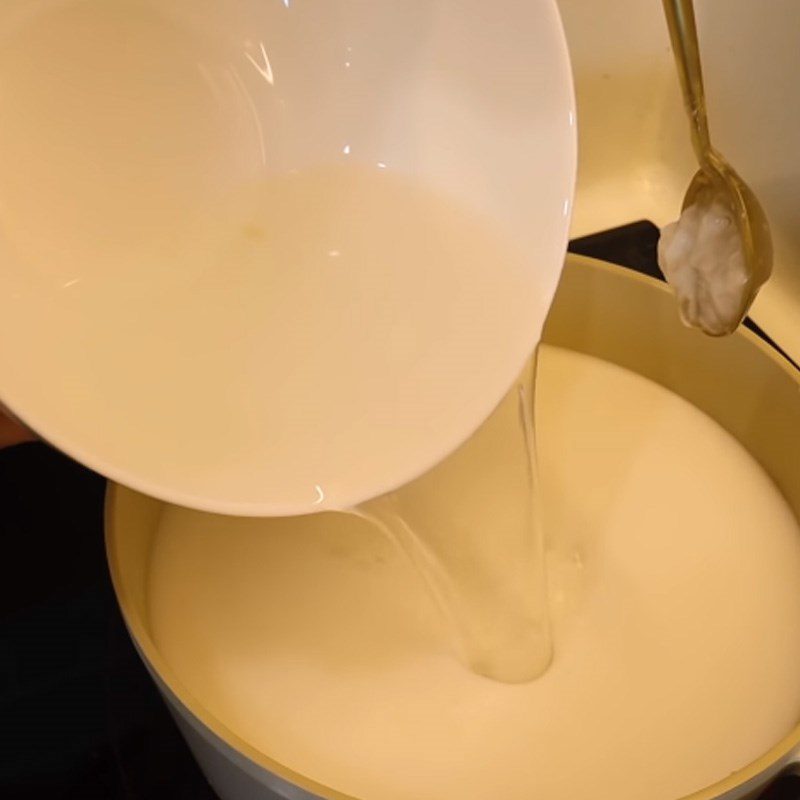
Cook coconut jelly balls
Place a pot of water on the stove and bring it to a boil, then drop all the coconut jelly balls into the pot and cook until they all float to the surface.
Stir gently, then cook for about 15 minutes. After that, cover tightly, turn off the heat, and let it rest for another 20 minutes for the jelly to cook completely.
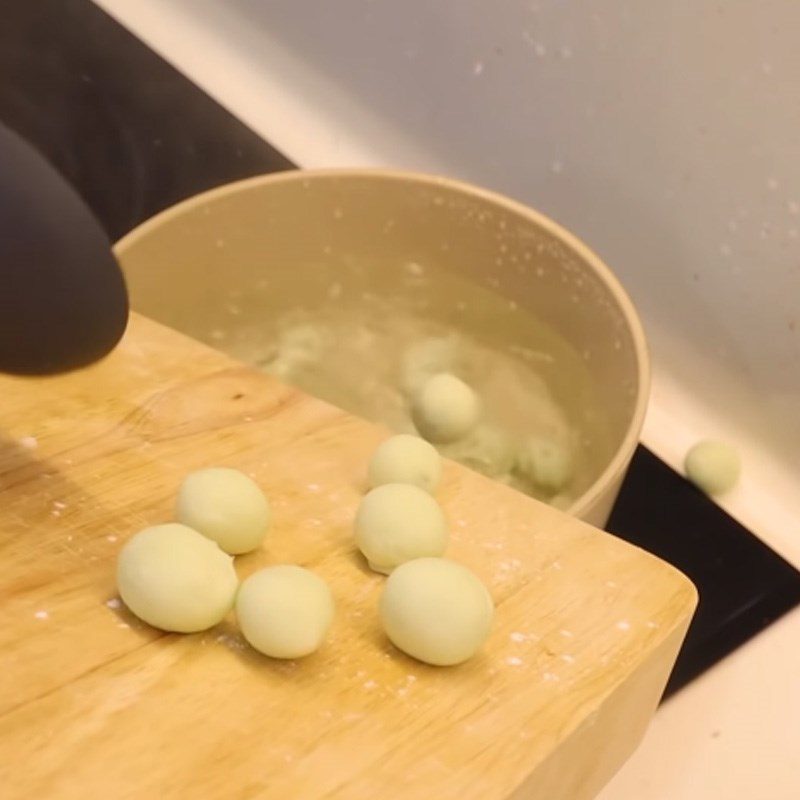
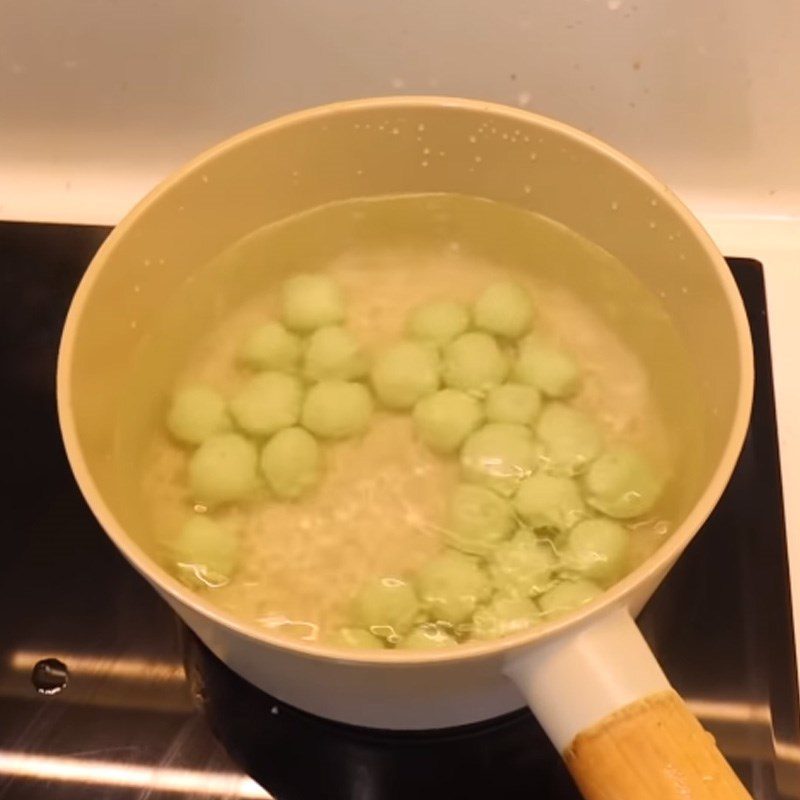
Completion
You can utilize the remaining coconut shell instead of a regular bowl to make the dessert look more appealing.
You need to put a few coconut jelly balls into the coconut shell, drizzle hot coconut cream over them, and sprinkle a little roasted peanuts on top to finish.

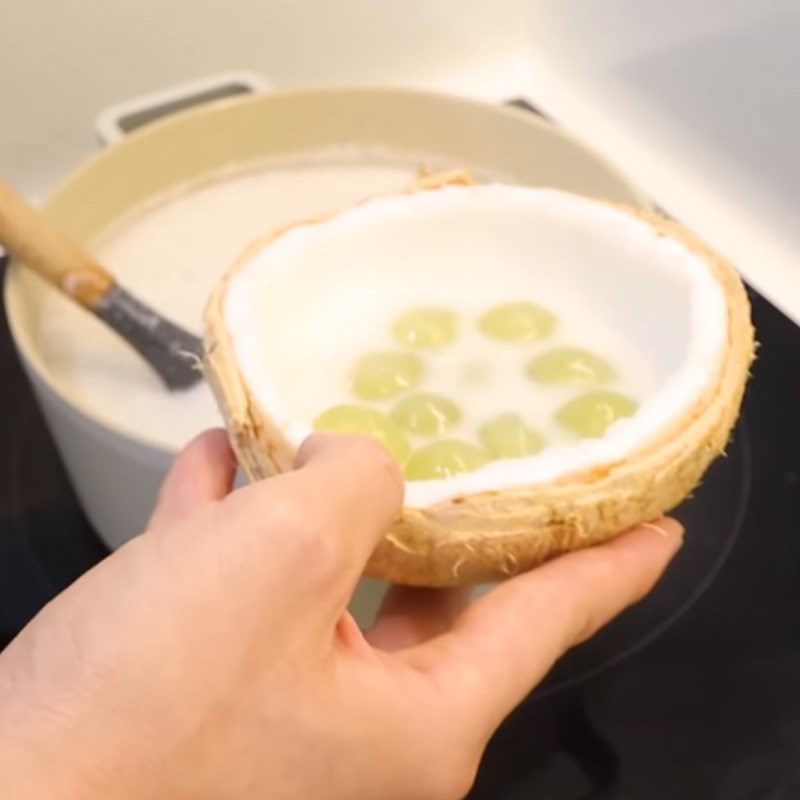
Final product
The soft dessert ball is wrapped around a chewy, delicious coconut jelly. It is served with fragrant coconut milk, rich and creamy, and the irresistible sweet taste is a must. The dessert should be served hot to fully enjoy the flavor.
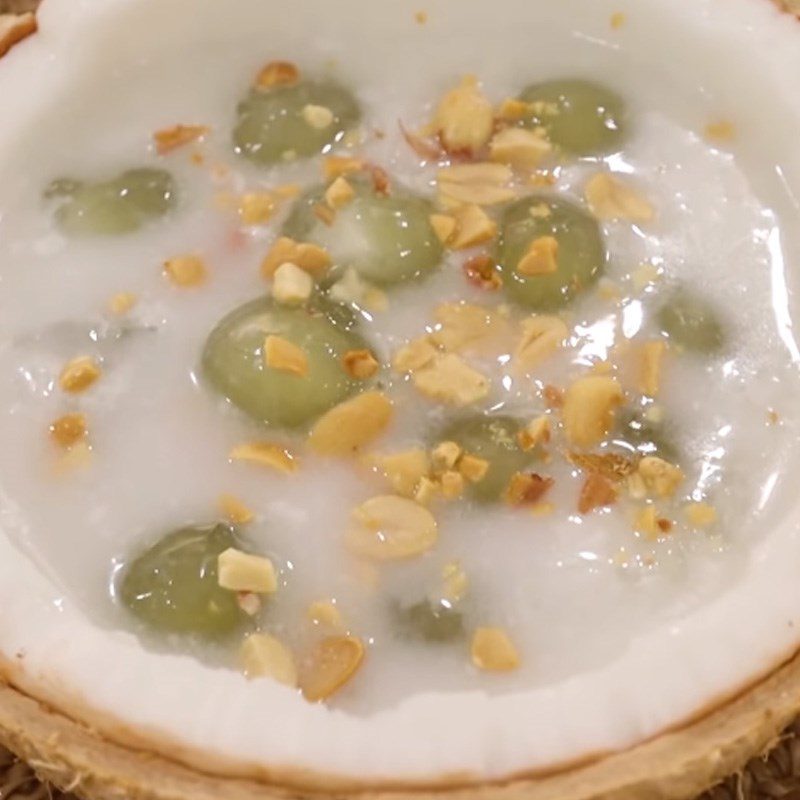

See more
Hope that with the steps to cook coconut jelly with pandan leaves and coconut milk that TasteVN just shared, it can help you successfully make a delicious dessert. Wishing you success in making this appealing dessert!
*Refer to the images and recipe from the YouTube channel: Gia Đình Cam Cam
